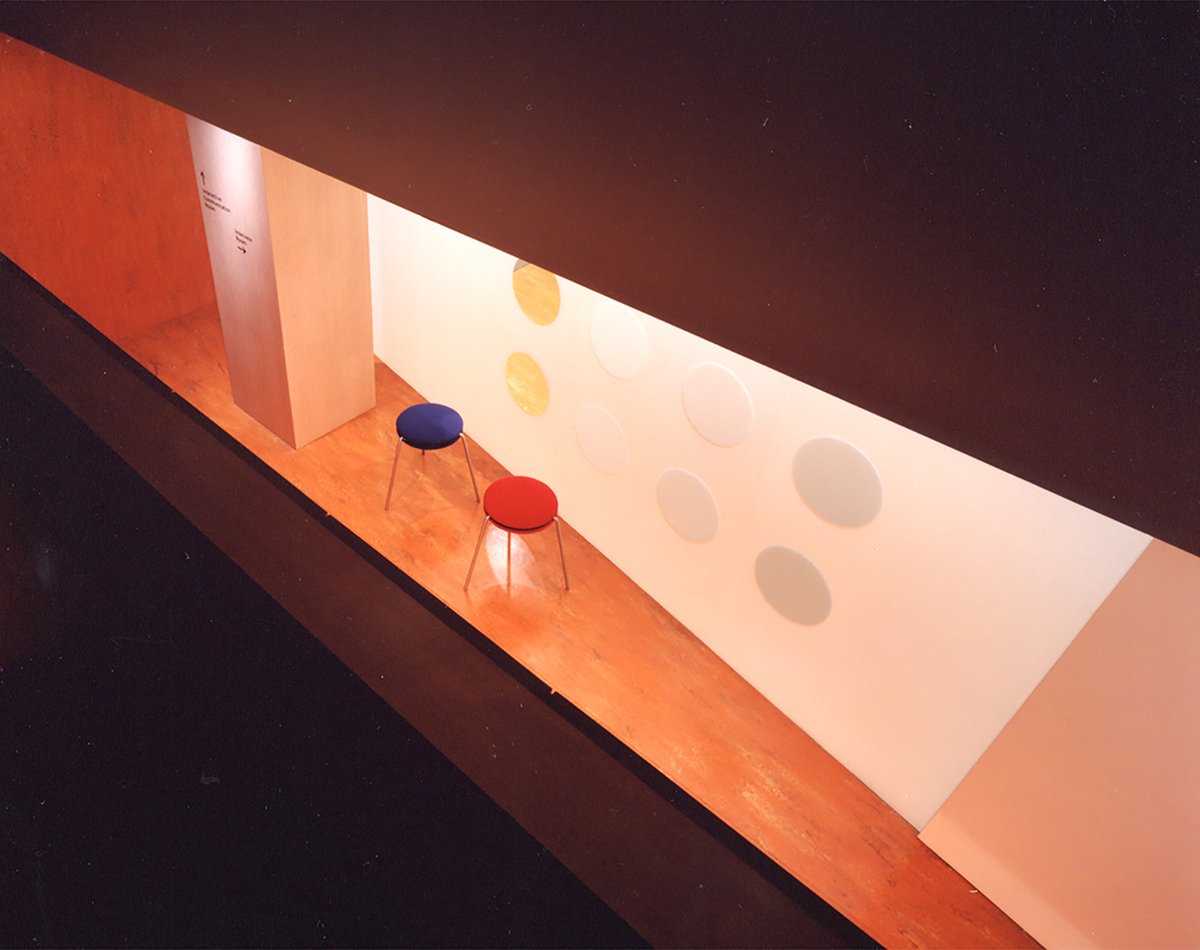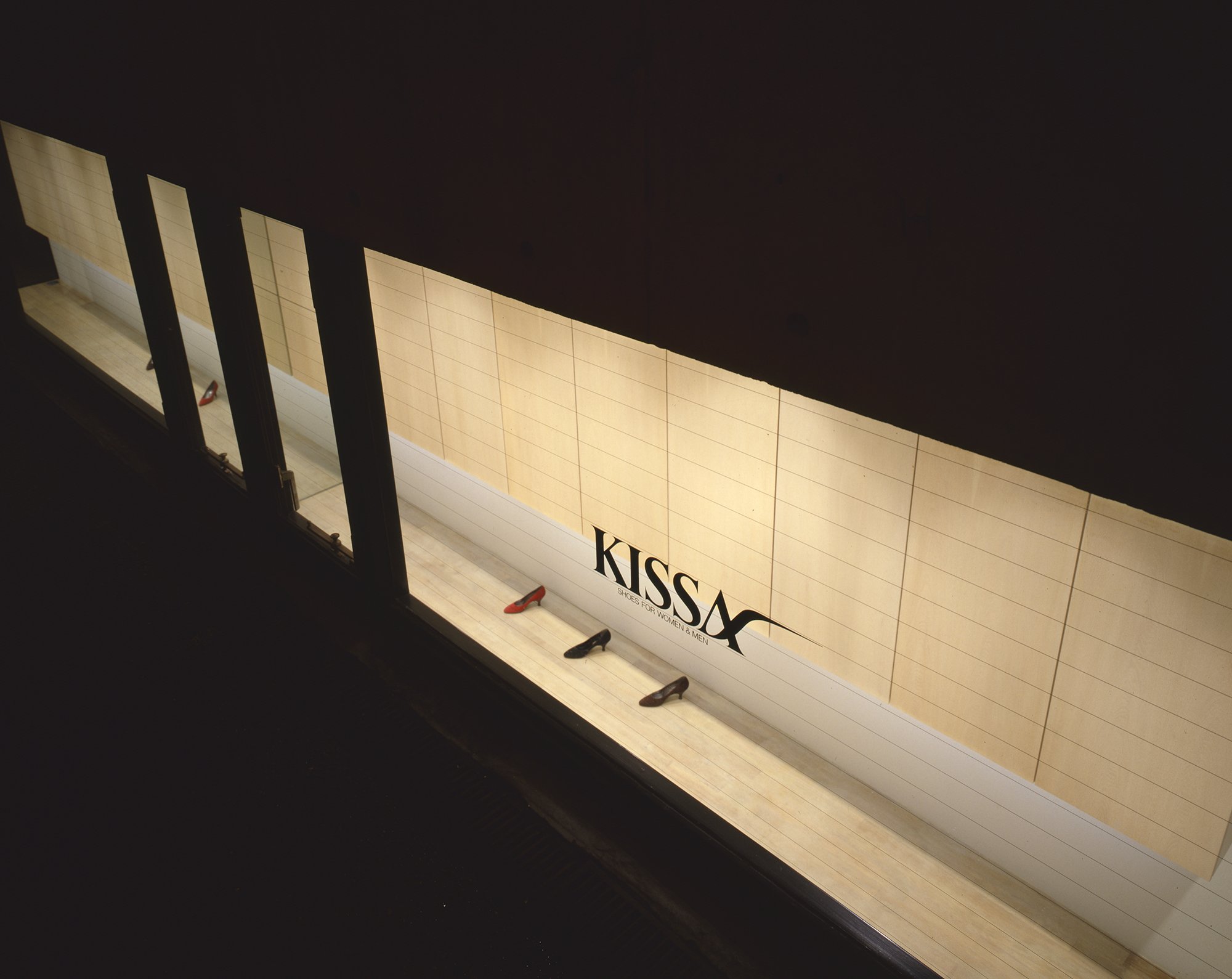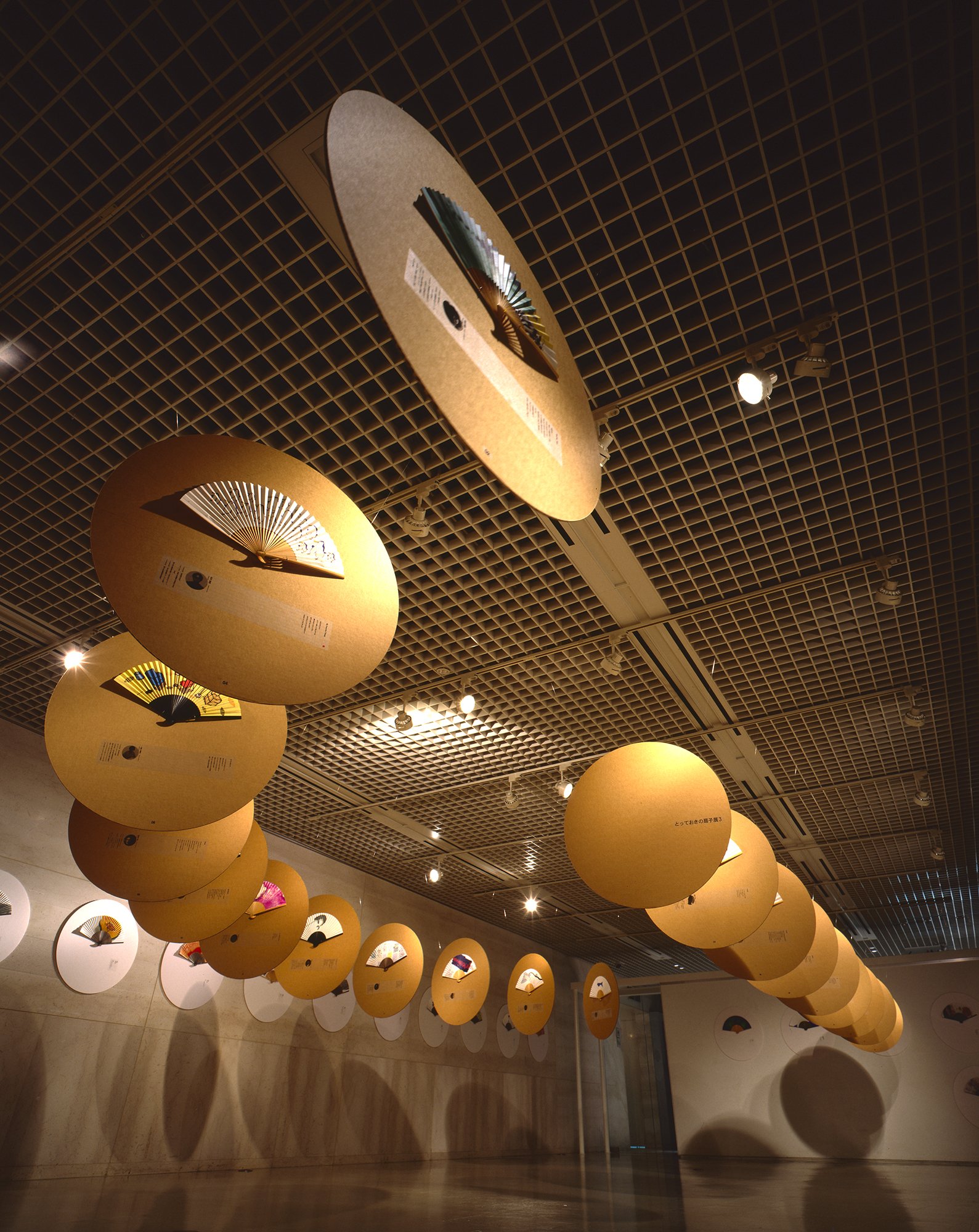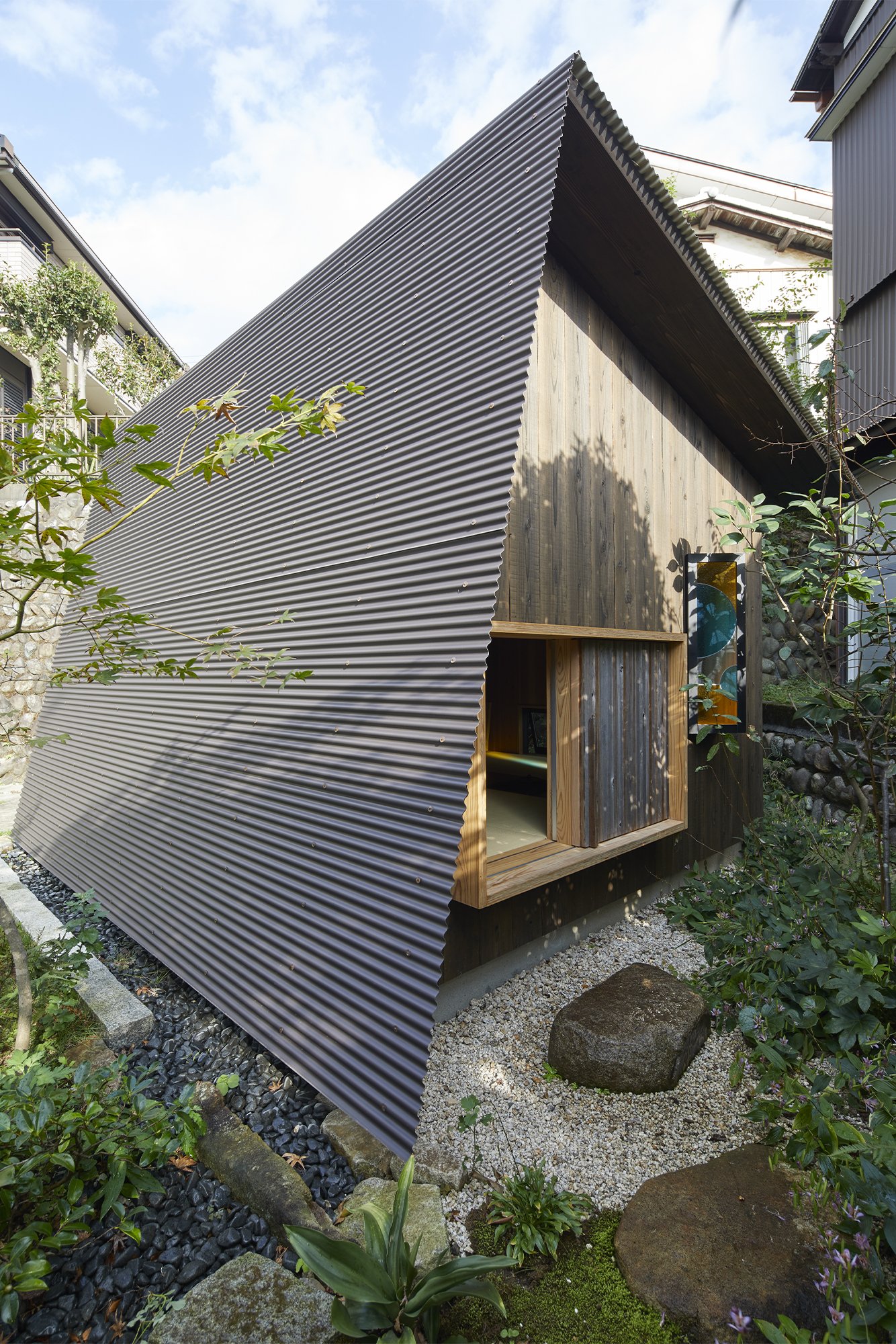Photographer Hiroshi Tsujitani vs Designer Makoto Koizumi
Column 2-002-E-21/09/2023
Furniture designer Makoto Koizumi designs all aspects of daily life from architecture to chopstick rests. Since establishing Koizumi Studio in 1990, he has commissioned Nacasa & Partners to photograph the spaces he designed.
We visited Koizumi 's studio in Kunitachi-shi, Tokyo, with its impressive exterior wrapped in green ivy with interviewer Hiroshi Tsujitani, who has been photographing Koizumi's spaces for over thirty years. This interview reflects on their encounter, the nature of their relationship, and the photo shoots to date.
(Interview conducted in May 2023)
Text: Emi Uemoto (Freelance editor)
Translation: Kazuko Sakamoto (Freelance translator)
Interview Photos: Sakura Sueyoshi (Nacasa & Partners Inc.)
Editing: Nobuko Ohara (Nacasa & Partners Inc.)
1. Encounter thirty years ago
Nacasa & Partners (hereafter referred to as N): Can you tell us about your first encounter and your impressions of each other?
Koizumi:I first met Tsujitani-san at the Joint Center, an interior design firm where I had worked. The firm's representative, Choei Hara, wanted Nacasa & Partners to photograph one of his works, so I attended the photo shoot because I was his assistant then. Tsujitani-san, do you remember which site it was?
Tsujitani:Well, I don't remember at all (laughs.)
Koizumi:I knew it (laughs.) At the time, the Joint Center was designing hotels, bowling alleys, offices, etc., so you must have been to some of them. We were both still in our twenties and absorbed in pursuing personal interests then, and I guess we didn't have time to notice what was happening around us.
Tsujitani:That's right. Today, I wanted to ask you why you joined the Joint Center after finishing school. Come to think of it, I had never asked you about this. You studied under architect Yoshifumi Nakamura at school, but why didn't you join his office?
Koizumi:Nakamura-san and I have the same values but differ in creative outputs. At the time, I had three offices that I was interested in joining. First, I went for an interview at an office within bicycling distance from my home, and they happened to take me in (laughs.) That was the Joint Center.
Tsujitani:I see (laughs.)
2. Photographing the first space Koizumi designed after he became independent
N: Koizumi-san, you asked Tsujitani to photograph your first project immediately after establishing your practice, right?
Koizumi:Joint Center had commissioned Nacasa & Partners to photograph their works, and I was impressed by the quality of the photos. Some photographers try to deceive us by playing around with composition. On the other hand, Nacasa & Partners shoots in a more orthodox manner yet still captures the heart of the viewers. I remember how amazed I was by the sense of depth I had never seen before. After I became independent, I called Nacasa-san and asked him to shoot my work, and he said "Okay!" And then Tsujitani-san came. Tsujitani-san, why did he send you?
Tsujitani:I wonder why... I'll have to ask him (laughs.) At that time, we were only a team of three: Nacasa, Nakamichi, and I, and I was the youngest. I think he sent me because I was close to your age, Koizumi-san.
Koizumi:The first work you photographed was "90's LABO," a photo gallery in Hiroo.
90’S LABO
Tsujitani:This space fitted nicely in the frame when I pointed my camera at it. As with interior designer Ikuyo Mitsuhashi's space, I felt it was guiding me on how to shoot it.
Koizumi:I am glad to hear that. I am not always concerned about how my work should be photographed, but when I design, I feel as if drawing a picture in the space. Maybe that's why you felt that way. Designers I respect, such as Shigeru Uchida, my former boss Choei Hara, and Shigemasa Noi, all create as if they were drawing in a space. Le Corbusier was also a painter, so his spaces are picturesque no matter where you photograph them. Looking back or sideways, they are always picturesque. Likewise, when I design, I make sure one sees a picture with every step you take, no matter how confined the space is.
Tsujitani:There are so many points to capture that I would probably keep photographing if I had unlimited time.
3. Change in design philosophy after designing a house
Tsujitani:Koizumi-san, many of the spaces you have designed seem relatively compact and human-scale. Why is that?
Koizumi:We used to receive commissions for larger-scale spaces from corporate clients. But my work style is to sit down and work closely with clients. With corporate clients, all sorts of people come in between, so my work style didn't suit very well. That's why most of my work today is for private owners, such as houses and stores.
Tsujitani:I see. The attractive thing about the spaces you design is that they make me want to live there, Koizumi-san. Actually, I wanted you to design my home. Unfortunately, circumstances prevented me from doing so, though.
Koizumi:I think my design philosophy changed after I started designing houses. Until I was in my mid-thirties, I used to do some directional projects. But when I started designing houses and focusing on daily life, I realized that I could express spaces fully without so much staging.
4. Camera angles beyond the designer's imagination
N:Which photo of your spaces taken by Tsujitani impressed you the most?
Koizumi:One of the shots I was particularly impressed with was the downward-looking cut from above in the Toppan showroom, one of my earlier works. I like this photo, which looks a bit like the cut Nakasa-san took of the Kissa Kobe Store (designed by Ikuyo Mitsuhashi.)
Tsujitani:Nakasa also liked that photo. I heard that when he finished shooting and was about to leave, he turned around, and that angle suddenly popped up in his mind.
Koizumi:These photos somehow have a similar atmosphere and sense of distance. Since the Toppan showroom, you have photographed most of my spaces. The cut looking up from below in the venue of the "Totteoki no Sensu" (Most Fascinating Folding Fans) exhibition at Ozone (1998) was excellent.
Tsujitani:The angle was the first thing that quickly came to mind because the exhibition venue was arranged as if masked by folding fans. Since the folding fans were at people's eye level, I thought shooting them lying on the floor would be a good idea. Based on my first impression of the space, I usually start shooting from areas that are easy to photograph in a straightforward manner. If I try different angles, I tend to get confused and go back to the first angle I came up with. Nakamichi is the opposite, taking his time and shooting slowly. I also tried to take photos in such a persistent way, but it didn't suit me.
Koizumi:How long have you been photographing in such a persistent way (laughs)? I appreciate how your photos reflect your down-to-earth personality and how you always shoot straightforwardly. You take photos from angles beyond my imagination, which I always look forward to.
5. A relationship allowing for frank and open discussions
N:How do you proceed with your shooting?
Tsujitani:Most designers come to shooting sites less often when they get busy, but Koizumi-san always stays by my side throughout the shoot, from start to finish.
Koizumi:I guess I made you a little uncomfortable, didn't I? (laughs) I appreciate our relationship in which we can discuss everything frankly and openly. I feel closely involved in the process. But in my case, if someone talks to me while I am designing, I would probably say, "Not now!" Tsujitani-san, do you have any problem if someone talks to you while you shoot?
Tsujitani:In my case, talking with someone helps organize and clarify things gradually.
Koizumi:Doesn't it bother you?
Tsujitani:Not at all. It is because photographers can deal with what they think in their heads and what they see with their eyes separately.
Koizumi:Some "chemical reactions" often occur when discussing each other's ideas. For us designers, photographs are crucial because they will remain for a long time. I am very grateful to have a photographer with whom I can discuss things frankly and openly and whom I can entrust with my work.
Tsujitani:Koizumi-san, you can usually grasp the position of small objects by the position of the camera, without looking through the lens, and move them to appropriate places.
Koizumi:These days, we can easily share angles with everyone using iPads, which is very helpful.
6. Capturing "ma" or a "space between spaces"
N:It seems challenging to photograph Koizumi-san's spaces because they are so simple. I think they might look too plain if not appropriately photographed.
Tsujitani:I never find them challenging to photograph. They are simple, but I photograph them with the idea of capturing "ma" or a sense of distance from one place to another in the space.
Koizumi:Yes, maybe that is Nacasa and Partner's style. For example, you would include something in the foreground. I think it must be challenging to photograph in such a way as to convey the sense of "ma" or "in-between" to the viewer.
Marutoku Furniture Store
Tsujitani:One of the recent photos I took of the Marutoku Furniture Store (2016), which I like, is also an empty space (laughs.) Without the railing in the foreground, it would be rather bland. The photo shows a shelf in the foreground, which is reflected in the window pane, and further outside the window, you can see buildings and passers-by on the street. By skillfully blending the distant, middle, and near views in a well-balanced manner, you can avoid making monotonous photos of a simple space.
Koizumi:That is exactly the sense of depth we get from your photos.
Tsujitani:I am not sure why I bother to put a little something in the foreground (laughs,) but it feels better that way.
Koizumi:Simply putting a little something in the foreground reveals the spatial relationship. My approach to making things involves specific orders and rules, such as aligning heights. However, photographing according to a design concept would probably result in monotonous and boring photos. Your photos achieve this depth because you shoot from a somewhat different viewpoint than a design concept.
N:Is there anything you two would like to try in the future?
Tsujitani: I am interested in photographing the same space on a regular basis.
Koizumi:That's a great idea. How about Tsubuan/Shako (2018), for example? Some spaces change and deepen over time. Another thing is that a photo shoot is a significant event for me and the client. I appreciate the feeling of being part of a team, including the client on-site, and I hope we will all continue to enjoy the experience together.
Tsujitani:It was a great pleasure to look at some of our fondly remembered photos with you today. Thank you very much.
Makoto Koizumi
Born in 1960. After mastering woodworking techniques, he studied under designers Choei Hara and Shigemitsu Hara. Established Koizumi Studio in 1990. Opened Koizumi Doguten in 2003 as a place to convey his designs. He designs all aspects of life, from architecture to chopstick rests, and continues to travel to manufacturing sites throughout Japan and work with local communities. In 2015, he launched the general incorporated association Wazawaza and started activities to revive handiwork. He serves as Professor Emeritus at Musashino Art University and Visiting Professor at Tama Art University. He received the 2012 Mainichi Design Award, the Japan 2015 Craft Exhibition Grand Prize, and the 2018 JID Design Award Grand Prize.
Hiroshi Tsujitani
Born in Tokyo in 1959. Graduated from Tokyo College of Photography in 1982. He joined Nacasa & Partners the same year after working part-time in the publishing photography department and has been with the company since then. Board Director of Nacasa & Partners.
Text: Emi Uemoto (Freelance editor)
Translation: Kazuko Sakamoto (Freelance translator)
Interview Photos: Sakura Sueyoshi (Nacasa & Partners Inc.)
Editing: Nobuko Ohara (Nacasa & Partners Inc.)











